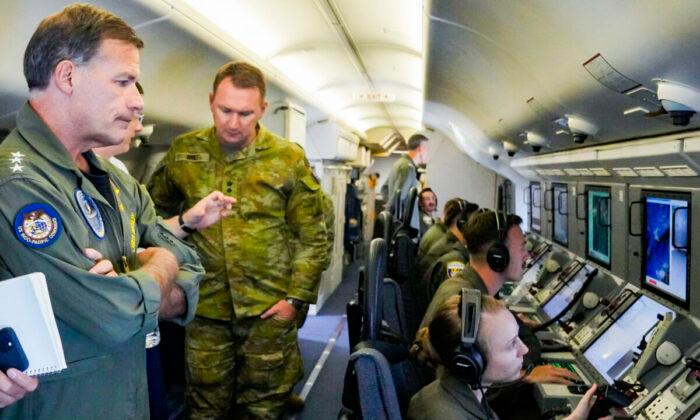The Pentagon has long floated the concept of the Joint All-Domain Command and Control (CJADC2) and its critical role in modern warfare. However, there is still no estimate on when this may become a reality for the U.S. military. The U.S. Indo-Pacific Command is determined to expedite the CJADC2 system in the Indo-Pacific region first in light of potential conflict with China.
Improving Combat Readiness
The CJADC2 system is a massive Pentagon project that links various service branches and acquires critical intelligence from all over the world to create a joint battle management system. It is a unified network powered by AI, and it presents plans and courses of action to the relevant decision-makers.Currently, the U.S. Indo-Pacific Command is not ready to train and utilize forces under the CJADC2 system in a potential conflict with China. Adm. John Aquilino, commander of the Indo-Pacific Commander between 2021 and 2024, hopes to assemble a Standing Combined Joint Task Force capable of operating in the CJADC2 environment before he steps down. An (SCJTF) typically refers to a temporarily formed multinational, multiservice force.
However, Adm. Aquilino currently lacks a fully functional CJADC2 system that would enable SCJTF commanders to effectively command and control all their forces against cyber attacks launched by adversaries in electronic warfare environments. This means that the U.S. military currently is unable to conduct all-domain joint operations in ongoing regional conflicts. The United States urgently needs to change this situation, especially as the threat from the Chinese regime in the region continues to grow.
The U.S. military believes that the best way to prepare for and deploy CJADC2 in combat is to authorize the Indo-Pacific Command to lead the CJADC2 system development. This is because the Indo-Pacific Command is at the forefront of confronting the Chinese Communist Party (CCP), facing the most immediate and realistic combat needs.
Future Military Capabilities
A complete CJADC2 system is so complex that it is almost impossible to achieve. For example, firing a howitzer requires several steps, including target observation, orientation, aiming, firing, and confirming destruction. Similarly, the Army, Navy, and Air Force have established their own battlefield command and control systems, each with its own unique requirements and corresponding complex issues to solve.The CJADC2 aims to link all service branches, including the Army, Navy, Air Force, and Space Force, to form a unified battle management system. This system can establish the most direct kill chain across land, sea, air, space, and cyberspace within seconds. For example, if a reconnaissance satellite from the Space Force discovers a high-value, time-sensitive target, an attack plan is immediately generated through AI and approved by relevant decision-makers.
This allows SCJTF commanders and their subordinate units to establish a real-time, dynamic joint operational command. It provides comprehensive situational awareness of the positions, combat status, and activities of all allies and enemies.
In a potential conflict involving multiple regional partners like Taiwan, the CJADC2 system is almost certainly the most desired by the U.S. military. However, creating such an intelligent command and control system that seamlessly connects across countries, services, and domains is almost unimaginably complex.

Technological Progress, Challenges
It took a year and a half just to integrate services and communication systems to achieve information flow and sharing between multinational combat platforms and mission command systems.The Pentagon and the Army are making progress in forming a short-term functional CJADC2 system that can support a range of real-time, small-scale joint missions.
“I’m going to produce a prototype—if you will—that will be demonstrated in our next big exercise this year to see where we are, what we’re doing, is it right, is it at scale,” he said.
So far, neither the Pentagon nor the Indo-Pacific Command has provided a timeframe for the CJADC2 system’s entry into combat application. We can expect that it is likely to first appear in the Indo-Pacific region, and it will likely not take years but in a much shorter timeframe.






